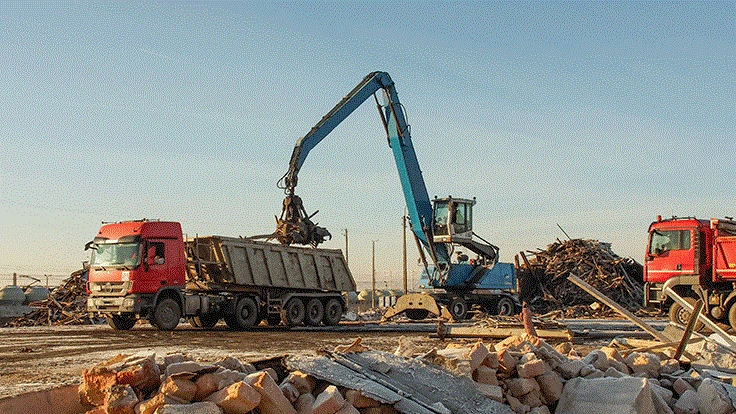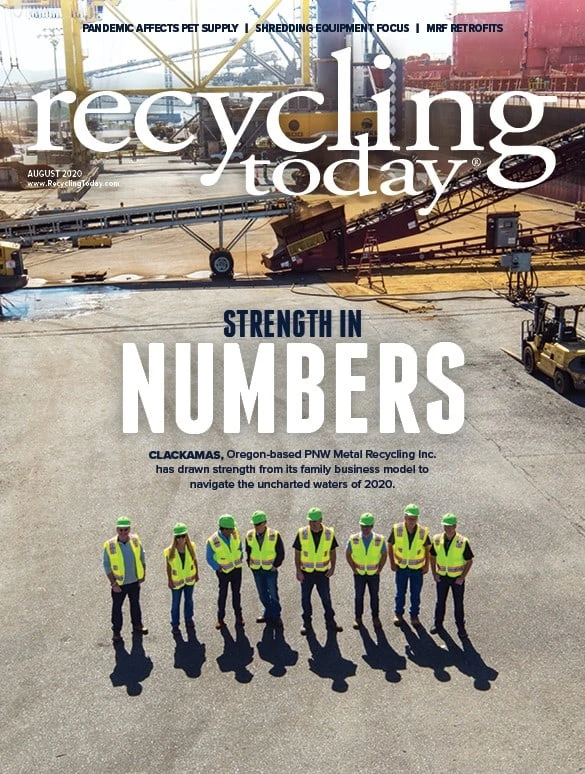
Zbigniew Kedzierski - stock.adobe.com

Terms such as “material handling” or “loading and unloading” do not bring to mind danger for most members of the public. However, the Occupational Safety and Health Administration states unequivocally, “The improper handling and storing of materials often result in costly injuries.”
At a scrap yard, material handling processes occur at several different locations at any given facility. They involve not only employees and mobile equipment but also rail cars, large trucks with sizable loads and smaller vehicles operated by peddlers and small scrap sellers.
How this truck traffic flows and where it is allowed to travel, plus how employees operating processing equipment, scrap handlers, loaders and forklift trucks are trained, all play a role in helping scrap yards enjoy days, weeks and months with zero injuries.
Straight on through
The Washington-based Institute of Scrap Recycling Industries (ISRI) has acknowledged the industry’s potential for worker injuries and spent considerable effort the past two decades creating programs to improve the recycling industry’s safety record.
David J. Borsuk of Wisconsin-based Sadoff Iron & Metal Co. is the president of ISRI’s Upper Midwest Chapter and is a co-chair of ISRI’s Safe Operations Committee. In his roles with Sadoff and the ISRI Safe Operations Committee, he has been able to look at scrap yard layout not only from the point of view of efficiency but also safety.
Individual scrap yard layouts tend to evolve as equipment is added and processing techniques change. For those who want to step back and consider a complete redesign, some limitations will present themselves immediately, Borsuk says.
“Parcel size and dimension are things that cannot be changed,” he says.
However, newly acquired land can present more possibilities. “If a company is looking at a greenfield site, they will have the greatest flexibility to comply with best safety practices and with environmental and municipal laws, rules and regulations,” Borsuk says.
"In many instances, raw material unloading and finished product loading are adjacent to production areas." – David J. Borsuk of Sadoff Iron & Metal Co.
Whether revamping an existing property or plotting a new one, “Regardless of size and dimension, it is important to design an operational plan that is reviewed by a cross-functional team so that all aspects are addressed,” Borsuk says.
What such teams usually find, he says, is that a traffic pattern that allows for quick deliveries with minimal backtracking is more efficient and safer. “It is optimal to minimize any interaction between inbound, unloading/loading and outbound traffic,” Borsuk says. “A straight line with few or no bends is safe and efficient.”
This line of sight for drivers also can benefit workers who are on foot or who are driving the mobile material handling equipment that keeps the scrap moving after it has been delivered.
Room for everyone
Even the most responsible drivers of 18-wheel trucks are in control of large, moving machines that can inflict harm on whatever they come into contact with, including pedestrians and smaller vehicles.
The nature of scrap recycling operations, however, will result in some interaction between these large trucks delivering scrap and hauling it away and the people and material handling equipment preparing the scrap for processing.
“In many instances, raw material unloading and finished product loading are adjacent to production areas,” Borsuk explains. “This is not bad and can be done safely if precautions are taken, such as having safe distance between loading/unloading areas and roadways, good communication (visual and verbal) between equipment operators and trucks and minimizing cross-traffic by pedestrians and service equipment.”
During the scrap delivery process, “Eighteen-wheelers generally unload by dumping or with the aid of a material handler,” Borsuk says. “An 18-wheeler takes more space, so adequate maneuvering room is necessary. There is always a potential tipping hazard, so it is important that ground is level and paved or hard pan.”
When drivers are familiar with the facility where they are delivering, that is a positive from a safety standpoint. If the delivery process is longer or otherwise involves the driver interacting with yard personnel from outside the truck, the yard operator “must make sure that there is a safe location for [drivers],” Borsuk says.
Facilities that accept deliveries from 18-wheelers as well as from peddlers driving pickup trucks have other safety measures to consider. “Pickup trucks are often operated by people less familiar with scrap yards and may need additional supervision,” Borsuk says.
“One way to address this is by having a separate unloading area for these trucks,” he adds. “Even though this scrap may be double handled, this may reduce interference with production and high-traffic areas and, thus, be safer and more efficient.”
Joining the circle
ISRI and its Circle of Safety Excellence (COSE) program offer safety materials that address some aspects of yard layout—including truck and mobile equipment traffic patterns.
“There are numerous resources for yard managers to reach out for safety advice,” Borsuk says of ISRI and its services. ISRI member companies can contact ISRI’s outreach and training team, including staff members Tony Smith and Commodor Hall, he adds.
ISRI staff members can connect member companies with programs such as the ISRI Blueprint — Safety Culture Assessment, the Hazard Recognition in Recycling program, a General Safety class and ISRI’s Transportation Safety Assessment, Borsuk says.
He recommends ISRI membership for all scrap recycling companies but adds that, when it comes to safety, the organization will make some of its findings available to nonmembers.
“Non-ISRI members can contact ISRI COSE members; one of the tenets of COSE is mentoring fellow industry companies regardless of trade association membership,” Borsuk says. “There are no competitors when it comes to safety.”
To the extent that competitive scores will be kept when it comes to scrap yard layout, one of the most important numbers on the board will be the one proclaiming a large number of consecutive days without a recorded workplace injury.

Explore the August 2020 Issue
Check out more from this issue and find your next story to read.
Latest from Recycling Today
- Orion ramping up Rocky Mountain Steel rail line
- Proposed bill would provide ‘regulatory clarity’ for chemical recycling
- Alberta Ag-Plastic pilot program continues, expands with renewed funding
- ReMA urges open intra-North American scrap trade
- Axium awarded by regional organization
- Update: China to introduce steel export quotas
- Thyssenkrupp idles capacity in Europe
- Phoenix Technologies closes Ohio rPET facility





